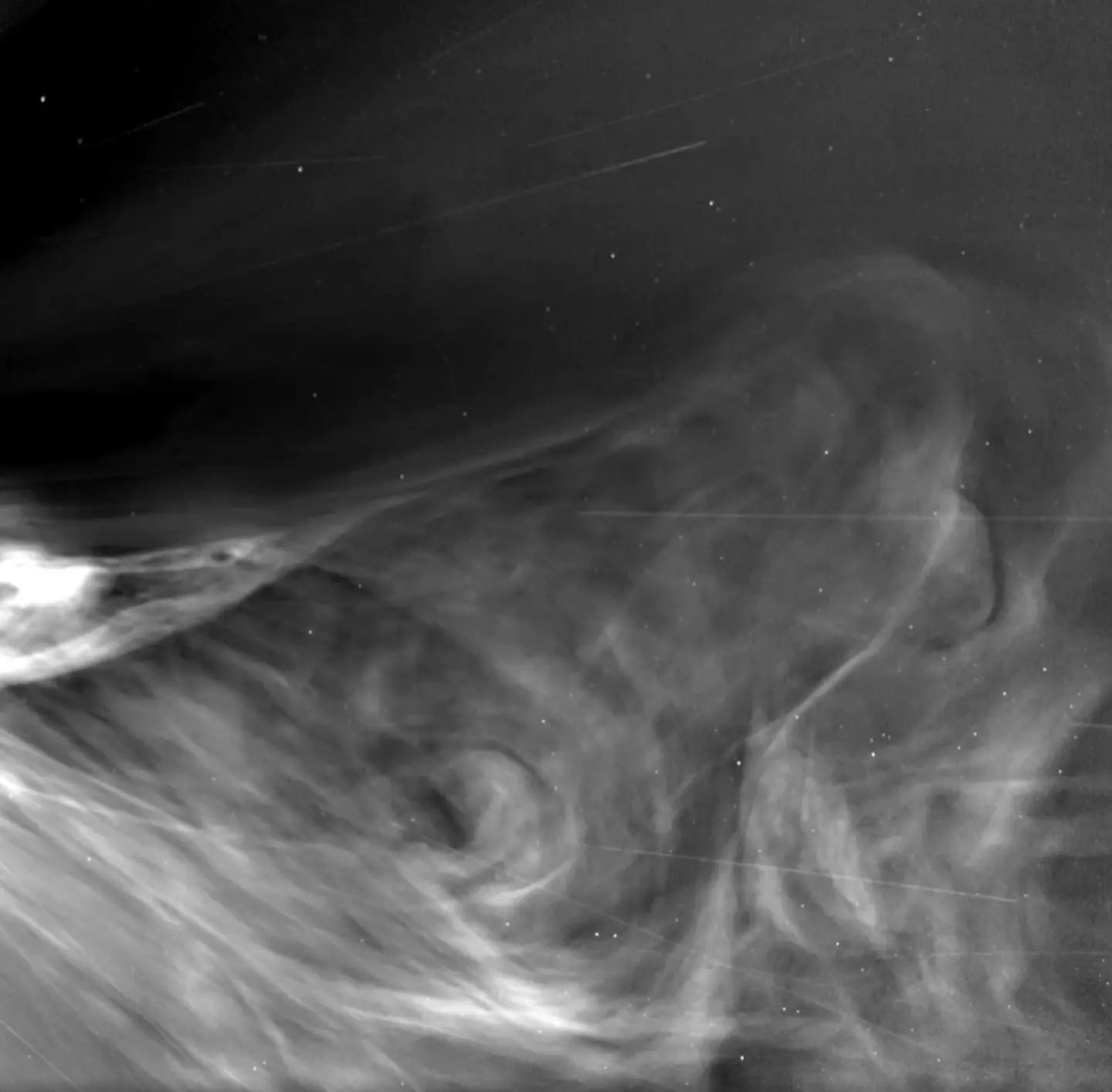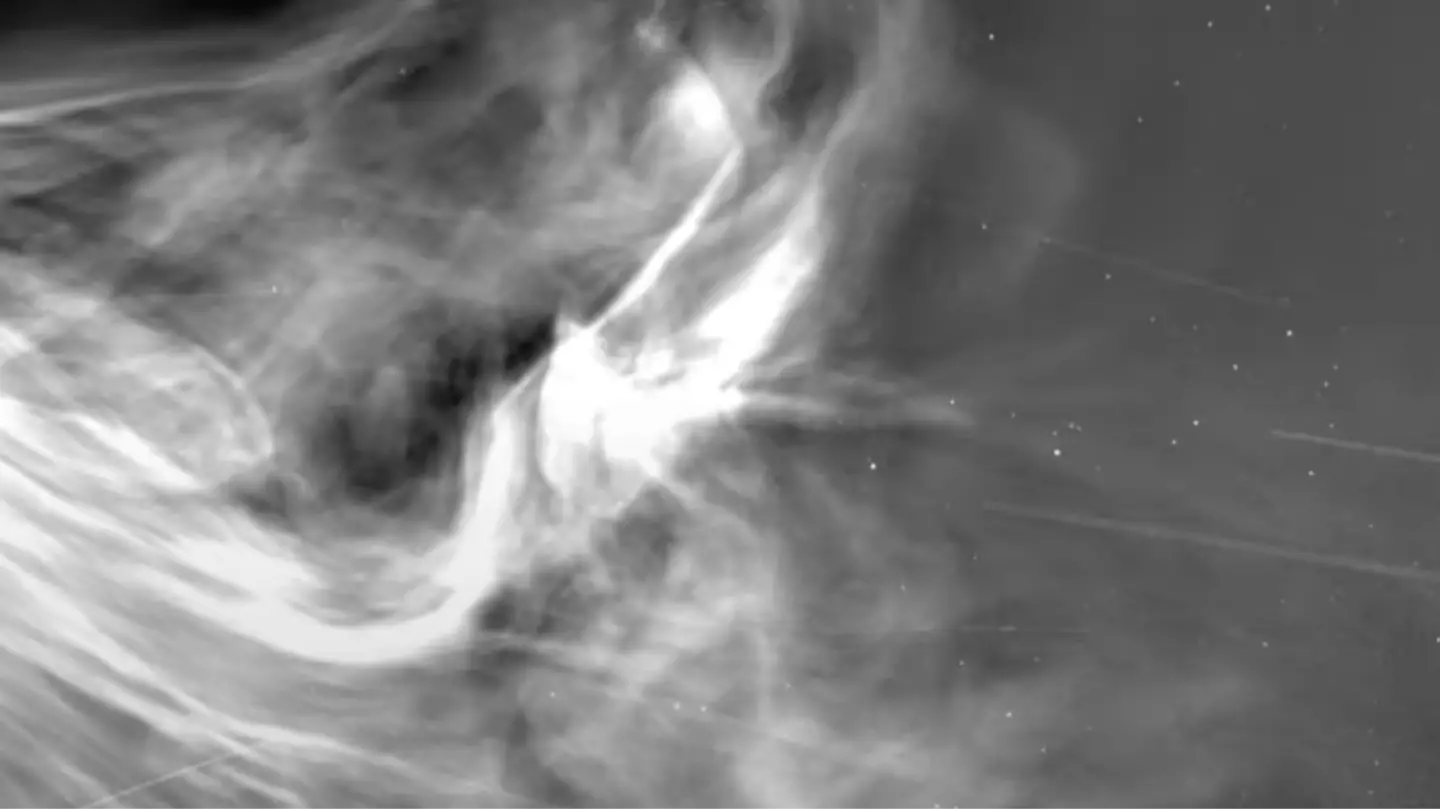NASA has unveiled images revealing the Sun’s surface, marking a significant milestone following its groundbreaking mission last year.
The mission commenced on December 24 when the Parker Solar Probe achieved an unprecedented proximity to the Sun’s surface.
The spacecraft soared 3.8 million miles above the Sun’s fiery exterior, enabling it to sample the star’s atmosphere for the first time.
This achievement placed it seven times closer to the Sun than any previous human-made object.
During its journey, the spacecraft traversed the Sun’s ‘corona,’ which is estimated to reach temperatures between 1.8 million to 3.6 million degrees Fahrenheit (1 million to 2 million degrees Celsius). On Earth, the corona is visible as bright wisps during a total solar eclipse.
Traveling at a remarkable speed of 435,000 mph, the probe retains the title of the fastest object ever constructed. It captured groundbreaking images of the Sun’s unseen atmosphere during its record-setting flyby.
These images are crucial for scientists seeking to comprehend the Sun’s influence throughout the solar system, according to NASA.
“Parker Solar Probe has once again transported us into the dynamic atmosphere of our closest star,” remarked Nicky Fox, associate administrator of the Science Mission Directorate at NASA Headquarters in Washington.
He further explained, “We are witnessing where space weather threats to Earth begin, with our eyes, not just with models.
“This new data will help us vastly improve our space weather predictions to ensure the safety of our astronauts and the protection of our technology here on Earth and throughout the solar system.”
Shared on social media, the Parker Solar Probe’s images have astounded viewers.
The visuals resemble a wisp of smoke or the movement of a substance through water, capturing the intricate curves and motions observed.
The Parker Solar Probe, equipped with various scientific instruments like the Wide-Field Imager for Solar Probe (WISPR), unveiled the corona and solar wind, a continuous flow of electrically charged particles from the Sun.
As noted by NASA, the solar wind and bursts of material and magnetic currents contribute to generating auroras, stripping planetary atmospheres, and inducing electric currents that can disrupt power grids and affect communications on Earth.

Studying solar winds could potentially provide insights into the Sun’s origins.
However, the release of these images has sparked skepticism among viewers, who questioned how the Parker Solar Probe managed to approach the Sun and endure the intense heat.
One individual commented: “How are they able to capture that with so much heat.”
Another remarked: “It’s hard to believe that this is real.. how can a camera not only survive that close to the sun, but perform flawlessly and transmit that feed? Surely radios and comms that close would be disrupted.”
In truth, the Parker Solar Probe is equipped with a hexagonal solar shield on its sun-facing side, designed to withstand the Sun’s extreme heat and radiation.
This protection is achieved through its reinforced carbon–carbon composite and carbon foam core, capable of enduring temperatures up to 2,500 F (1,370 C).
In conclusion, the Parker Solar Probe’s design ensures its resilience in studying the Sun’s atmosphere.

